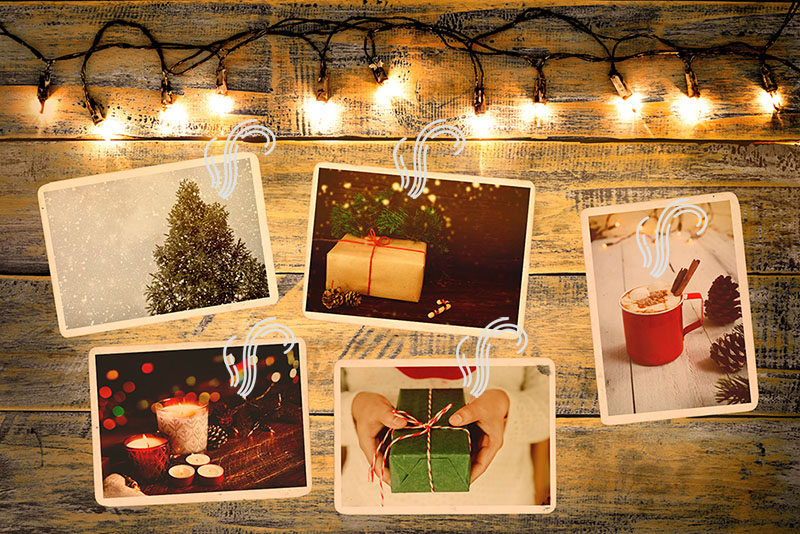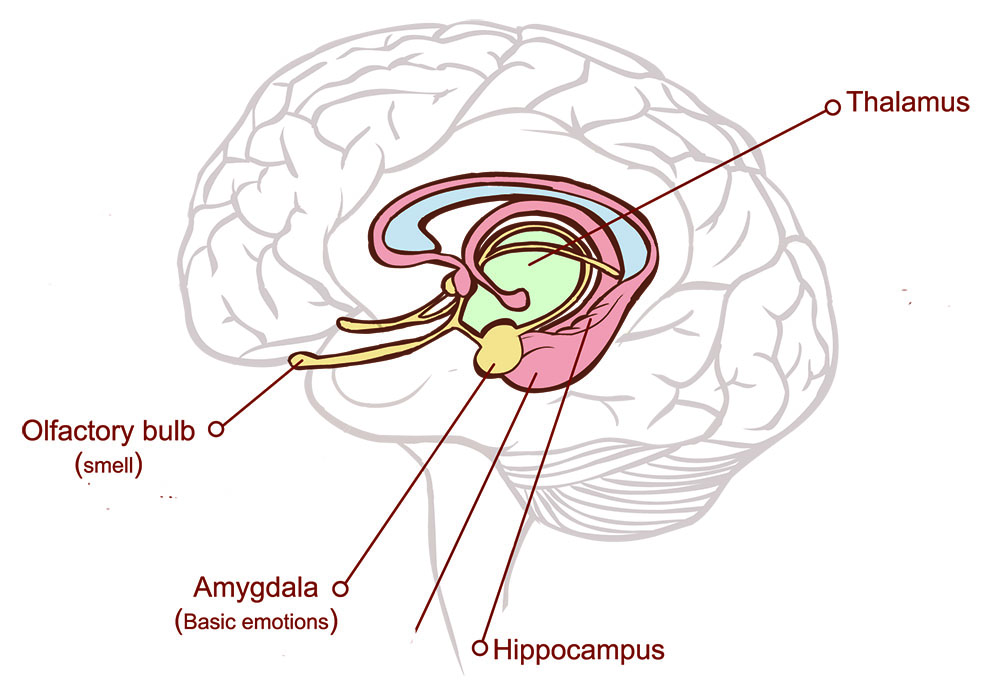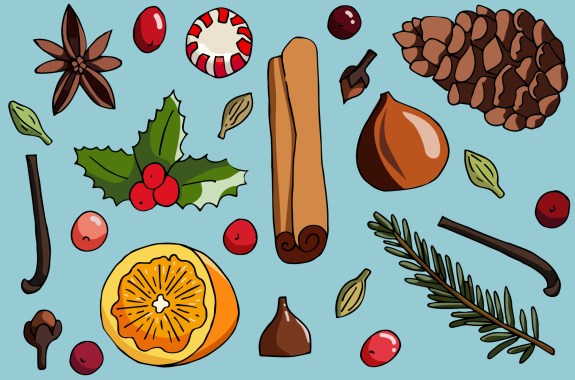Grade Level
All
minutes
15 min - 1 hr
subject
Chemistry
Activity Type:
design challenge, kitchen chemistry, food science

Have you ever smelled something and—WHOOSH—a rush of emotions and memories spring to life in your mind? That’s because our sense of smell, more than any of our other senses, has the power to trigger emotions and associated memories.
When we breathe in a smell, we are inhaling small, gaseous organic molecules from the air. Smells can be made up of hundreds of molecules that are trapped by olfactory receptor neurons in our nose. These neurons are directly connected to our brain, where we turn the chemical signal into a perception of smell.
A common smell, like our own shampoo or laundry detergent, is unlikely to bring up any powerful emotions or memories. However, special scents that only surface occasionally, such as regional or seasonal smells, may cause emotions and memories to flood our brains.
We know we can capture a scent in a jar, but can we capture a memory? And not just any old memory composed of words or photos or videos. A scent memory that is specific to you and your family during the winter season. It’s time to find out!
Gather Materials
Stove top
Tall pot with a lid
Glass Mason jars
Oven mitts
Tongs
Towel
Water
Ice cubes
Winter-smelling materials, like spices, fruits, pine needles, flowers, or chocolate
Build A Base
Collect various winter-smelling materials from around your home. Think spices, fruits, flowers, or even chocolate. When you are ready, follow these methods to capture a scent in a jar. Remember to only capture one scent at a time!
Safety Note: Adult supervision recommended because you will need to use a stove and safely handle hot jars.
- Let the liquid inside the jar cool, then smell!
- Repeat these instructions for several different winter scents. The goal is to end up with many jars, each containing their own scent.
As the scented items are heated in the water, they release gaseous molecules into the air. The ice cubes on top of the lid cause those molecules to cool down, condensing into a liquid. The liquid is collected inside the mason jar, capturing your scent!
Test Out Some Variations
Test # 1: Combine Two Capture Scents Together
What happens when you mix two captured scents together?
Credit: Jennifer Powers, via GIPHY
Test # 2: Capture The Scent Of Two Items Simultaneously
What happens if you combine two winter scent items in the pot and capture their scent together?
Credit: Jennifer Powers, via GIPHY
Which process resulted in a better combination of the scents?
Design Your Own Scent Memory
Now that you have captured several individual scents and tested out methods for capturing multiple scents, it is time to craft a winter scent memory!
The Challenge
Design the best winter scent memory. This scent should appeal to the most people in your household and remind them of a winter memory. Even if everyone in your group has a different idea about the kinds of winter scents that bring up memories for them, can you combine their ideas into one scent memory?
- What smells evoke winter memories for you? Can you identify specific parts of that scent? Write down the smells that define the winter season for you and the people around you. Remember to also brainstorm the specific ingredients you would need to reproduce those smells.
- Use you new scent capture skills to create your winter scent memory.
So, What Happened?
- Could people identify the components of the winter scent you designed?
- What winter scents were most important for you? Your family?
- What emotions do you feel when you smell your captured scent?
- How long does the scent last inside the jar?
- Did any materials not produce a strong scent? Why do you think that is?
Looking to continue your exploration? See if you can fool your friends and family members! Design a mystery scent, capture it in a jar, and see if people in your household can identify what it is!
What’s The Science?
Why do smells, more than any other senses, have the power to trigger emotions and associated memories? It has to do with the route smell signals travel through our brain!

Most senses (like touch or taste) send signals directly to the thalamus, the area of the brain responsible for sensory and motor signals. Neurons that carry smell signals, however, pass through the amygdala, which processes emotions. They also pass through the hippocampus, where we form memories. Eventually, the smell signal does make its way to the thalamus, but not before affecting our memories and emotions first!
This explains why our sense of smell is most directly connected to our personal emotions and memories!
Credits:
Written by Jennifer Powers
Illustrations by Carrie Lapolla
Editing by Xochitl Garcia, and Ariel Zych
Digital Production by Xochitl Garcia
Meet the Writer
About Jennifer Powers
Jennifer Powers is a science educator at the Oregon Museum of Science and Industry in Portland, where she makes science fun for everyone through strategically designed exhibits and hands-on activities. She has bachelor’s degrees in botany and Spanish from Washington State University and a master’s degree in plant ecology from the University of Wyoming.

